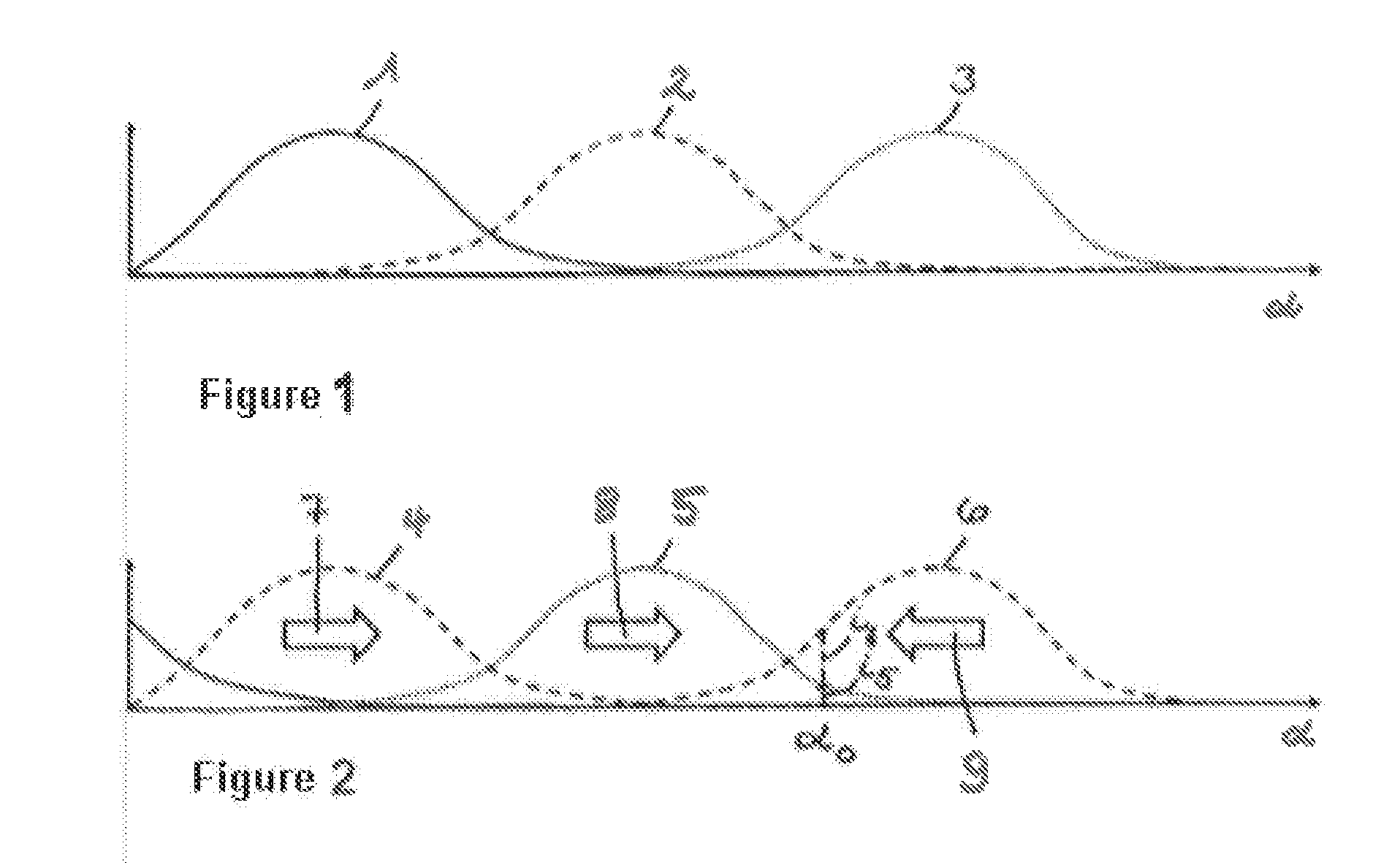Method for the slip regulation of a friction clutch and clutch actuator therefor
a technology of friction clutch and actuator, which is applied in the direction of fluid clutch, non-mechanical actuated clutch, magnetically actuated clutch, etc., can solve the problems of increased wear-inducing heat entering the friction clutch, small rotational angle of the rotor, and high fuel consumption, so as to reduce the risk of wear and the effect of high axial travel
- Summary
- Abstract
- Description
- Claims
- Application Information
AI Technical Summary
Benefits of technology
Problems solved by technology
Method used
Image
Examples
Embodiment Construction
[0015]FIG. 1 shows the signal profiles 1, 2, 3, sensed in analog fashion, of three Hall sensors arranged uniformly one next to the other in the circumferential direction of the rotor, over the rotational angle α of the rotor of an electric motor. The signal profiles 1, 2, 3 are sinusoidal and overlap one another, in such a way that the signals of two Hall sensors are available to each rotational angle α of the rotor, and can be determined discretely and with high resolution by means of the information as to which sensors are involved with which signal component. The invention is not restricted by the fact that the signal profiles 1, 2, 3 which occur in analog fashion in the sensors are digitized in a signal processing step in a sensor in-situ electronics system or in a control unit, for example by means of an A / D converter.
[0016]FIG. 2 shows the commutation, occurring on the basis of the signal profiles 1, 2, 3 of FIG. 1, of the magnetizable magnet elements such as windings or coils...
PUM
 Login to View More
Login to View More Abstract
Description
Claims
Application Information
 Login to View More
Login to View More - R&D
- Intellectual Property
- Life Sciences
- Materials
- Tech Scout
- Unparalleled Data Quality
- Higher Quality Content
- 60% Fewer Hallucinations
Browse by: Latest US Patents, China's latest patents, Technical Efficacy Thesaurus, Application Domain, Technology Topic, Popular Technical Reports.
© 2025 PatSnap. All rights reserved.Legal|Privacy policy|Modern Slavery Act Transparency Statement|Sitemap|About US| Contact US: help@patsnap.com


